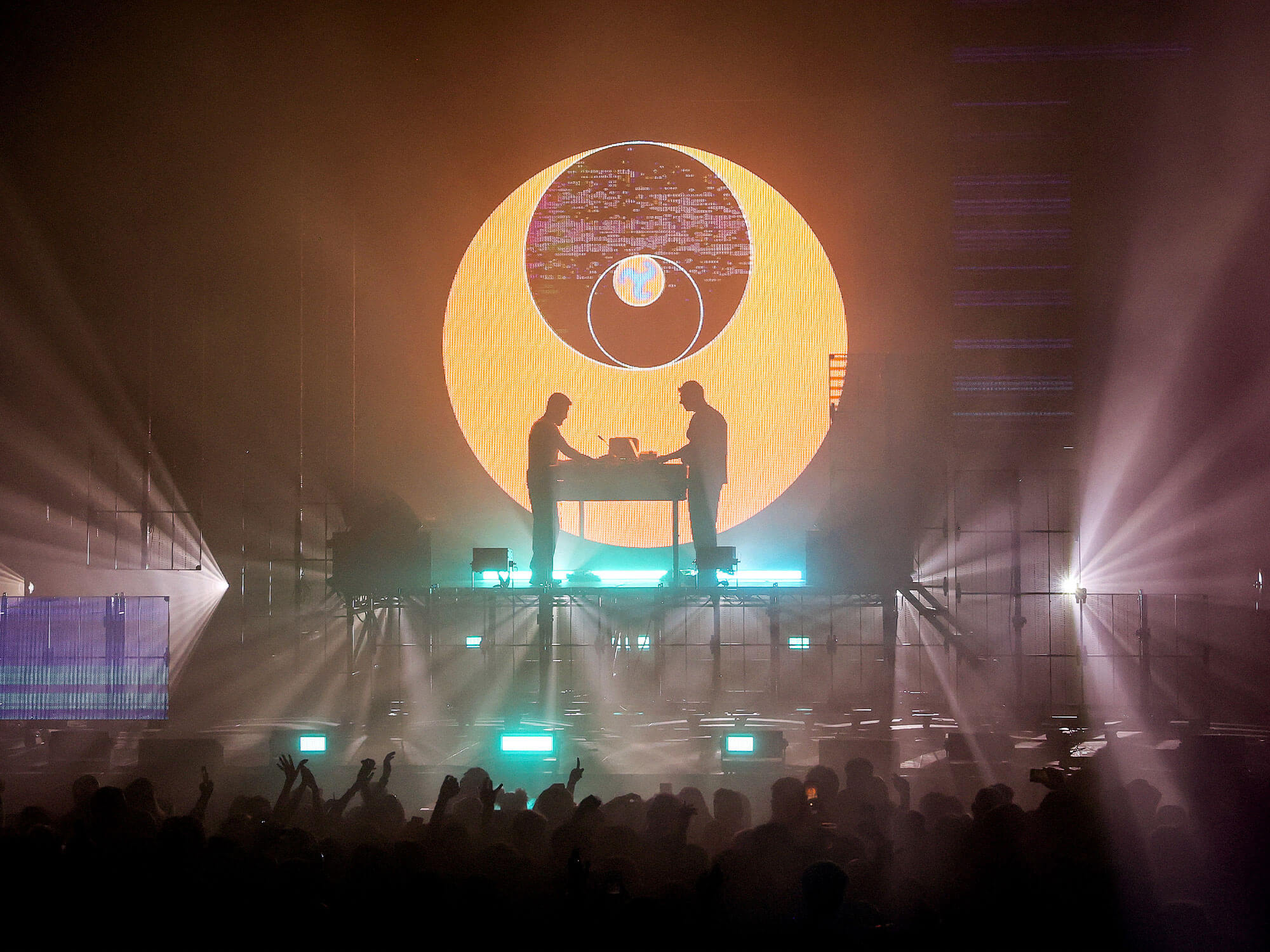Bicep’s Coachella 2024 AVDJ set had a lot to live up to
We checked out what Bicep’s AVDJ set had to offer at Coachella 2024, seven years after a spectacle performance.

Bicep at Coachella 2017. Image: Getty
Bicep’s live set at Coachella 2017 was one of legend. The Yuma tent is mostly a space for DJ sets, but they brought the human element into the space with their live, hardware-forward performance.
READ MORE: Coachella 2024’s best immersive performances, from the subtle to the stunning
It was a unique and epic experience, so when they announced a closing set at Coachella 2024 it came with high expectations. This time around, the British duo weren’t playing a live set; they put on a new kind of performance with an exclusive Chroma AVDJ set. So exclusive, in fact, that photographers and videographers weren’t allowed to capture any content from the performance.
Live sets are traditionally renditions of the artist’s original music, and for the last several years Bicep has helmed live sets all over the world. From international tours that took them through the US, to festivals like Glastonbury and their last appearance at Coachella in 2017, they used a vast array of hardware like the Akai MPC 2000XL, Roland SH-101, and Mode Machines ADX-1 to rework tracks like Rola, Glue, and Eliza into elevated and enhanced versions of their former selves.
But like many artists before them, Bicep likes to switch it up from time to time. Except, instead of reverting to a standard DJ set, they injected a fresh dose of originality through a series of specially designed visuals. The stuttering graphics resembled a forward-moving journey through Matrix-style code, layered over the multicoloured static of a TV that appeared desperate to produce a moving picture for its eager viewers.
When they played their live set at Coachella in 2017, they were in the Yuma tent, Coachella’s enclosed dance music stage. It’s basically a nightclub. In that environment, they used their array of tech to create transitions that emphasised suspense and emotion. They opened space and implemented dynamics like a conductor leading an orchestra. Every knob and button in front of them was its own instrument, waiting until the perfect time to strike and contribute to a musical experience greater than the individual whole.
This time, Bicep selected tracks that allowed them to interpret these musical ideas, delivering a variety of drumbeats that are more complex to mix than metronomic kicks. They played breaks, electro, techno, and dubstep, and linked these disparate sounds with elements no one expected, such as vocals that exist outside standard versions of their tracks.
Overarchingly, they used their visuals to accentuate their creative flow. During transitions, the lights remained a single colour and a solitary image of their triple-armed flex logo floated on the screen behind them.
As they switched from the deep and grimy hits of Swing King by Cesco & Hamdi, Clara La San’s voice faded in right before the jittering synth slices of Opal. The two melodic ideas floated next to each other, slowly connecting into a singular form, and when the union materialised, the Chroma visuals erupted out of the screens.
It was the last set of the last night so the crowd was dancing with some restraint, but when the flashing pictures came up, everyone stopped moving for at least a second to take it all in.
No one could tell if Bicep were playing a DJ set or a live set. But everyone adored what they were seeing and hearing.
Read more music technology features.